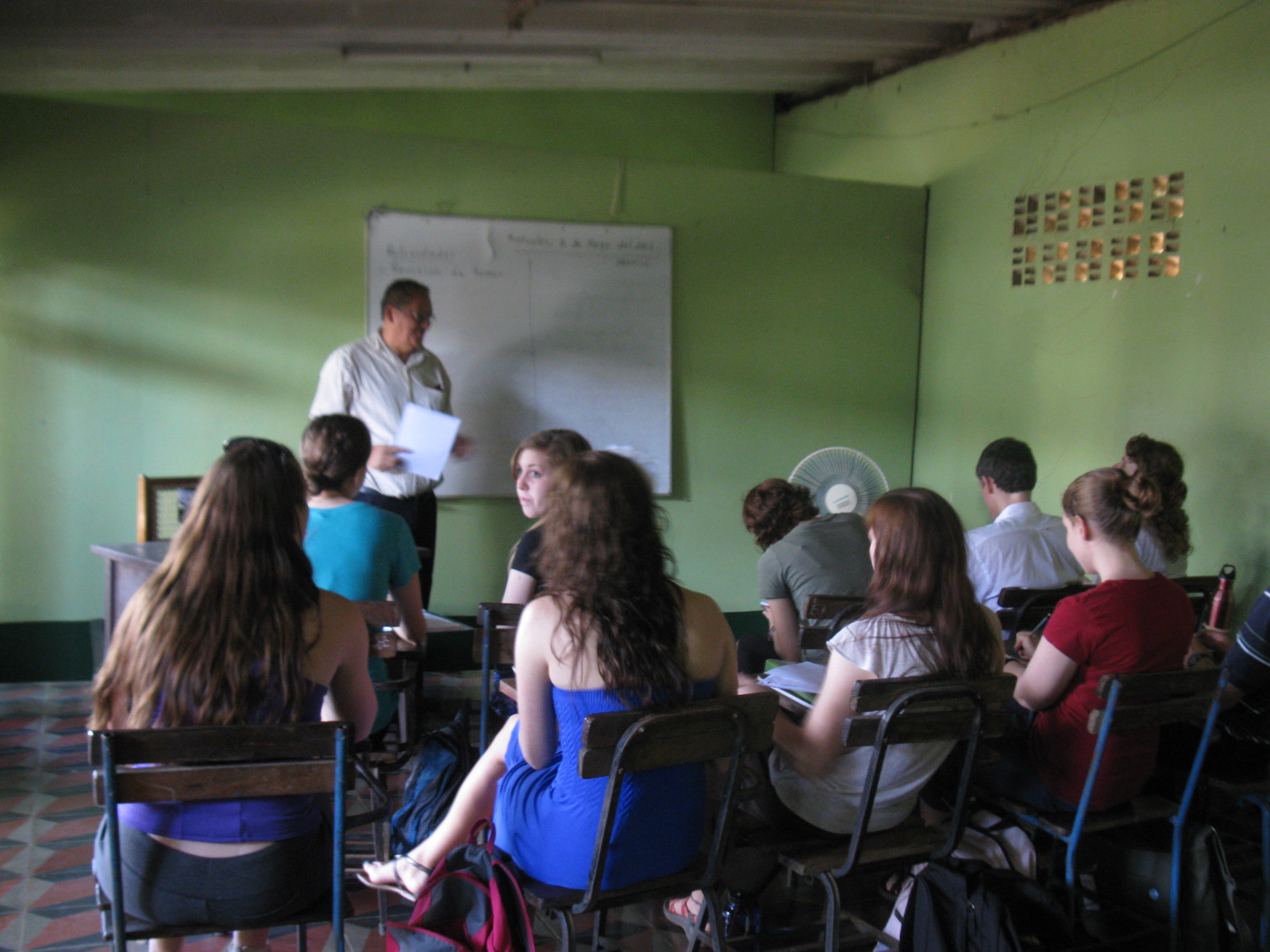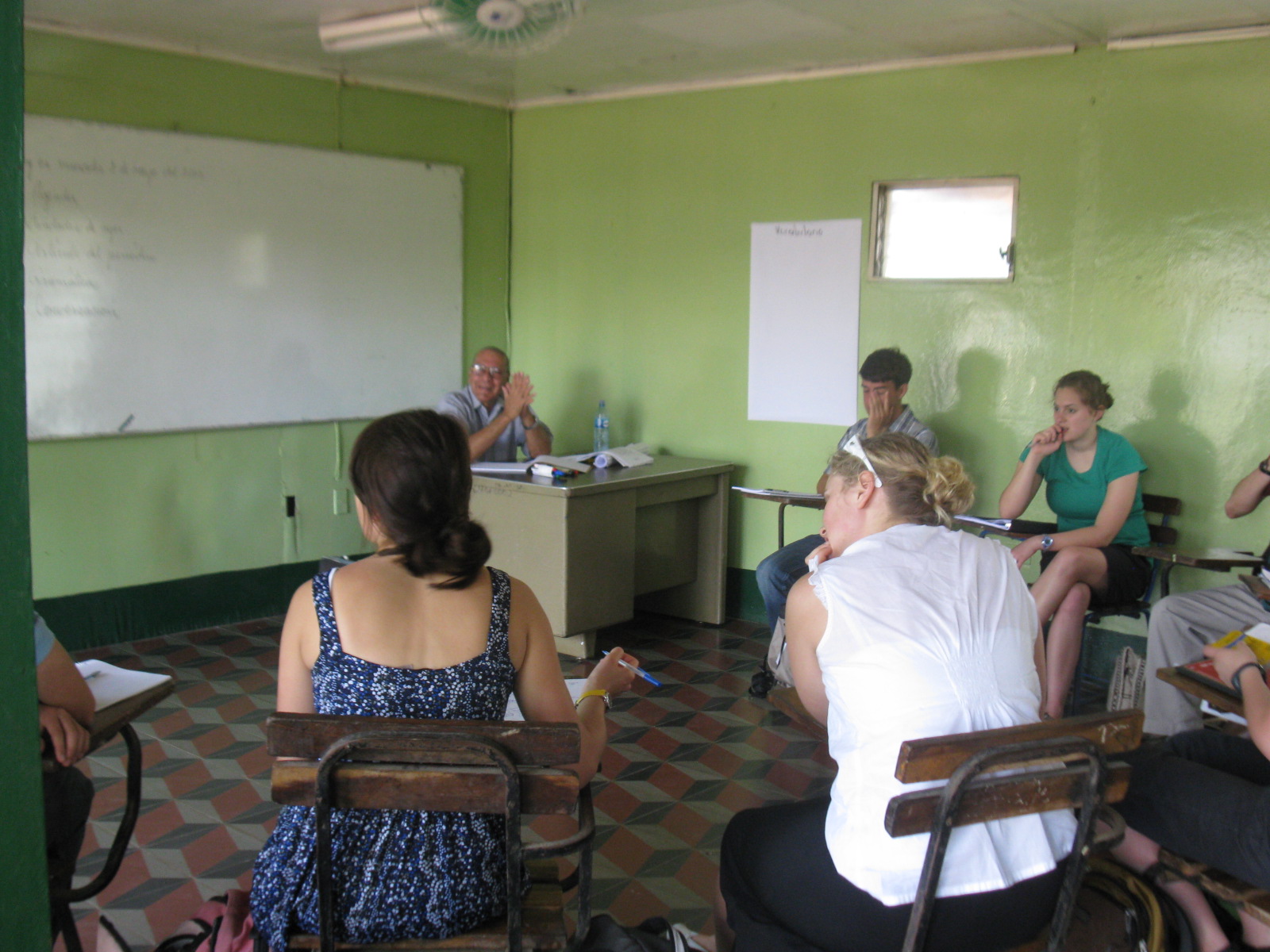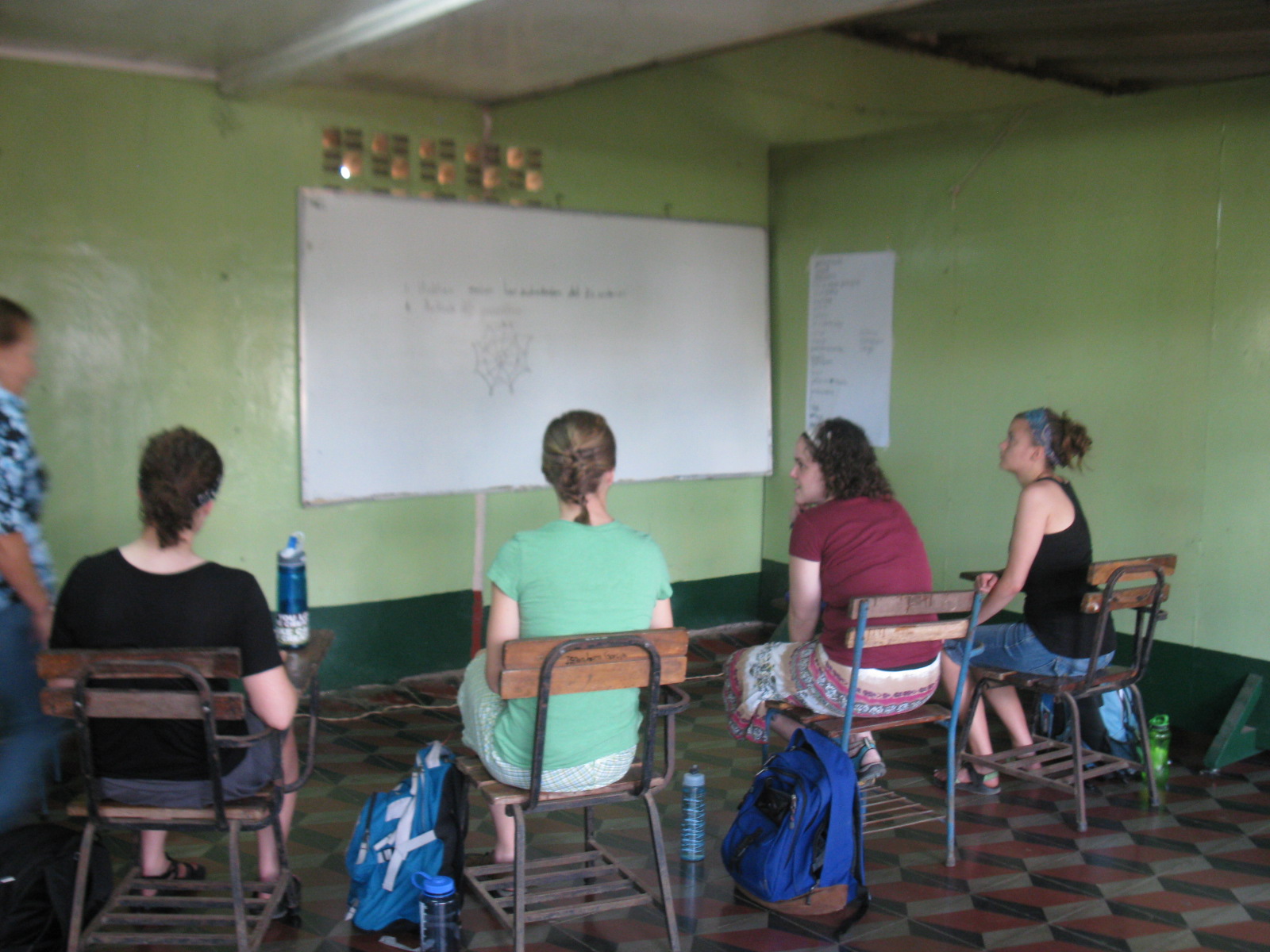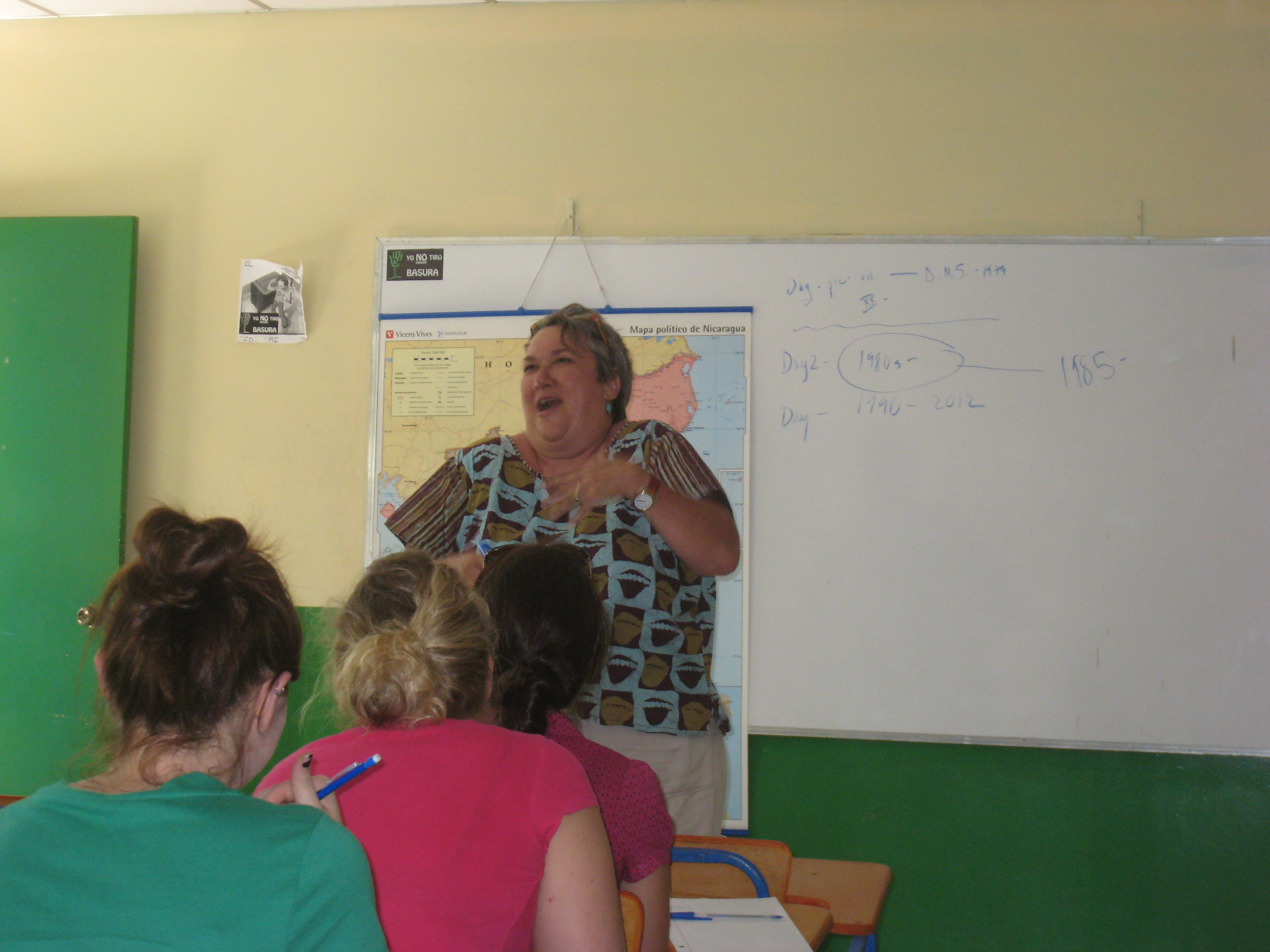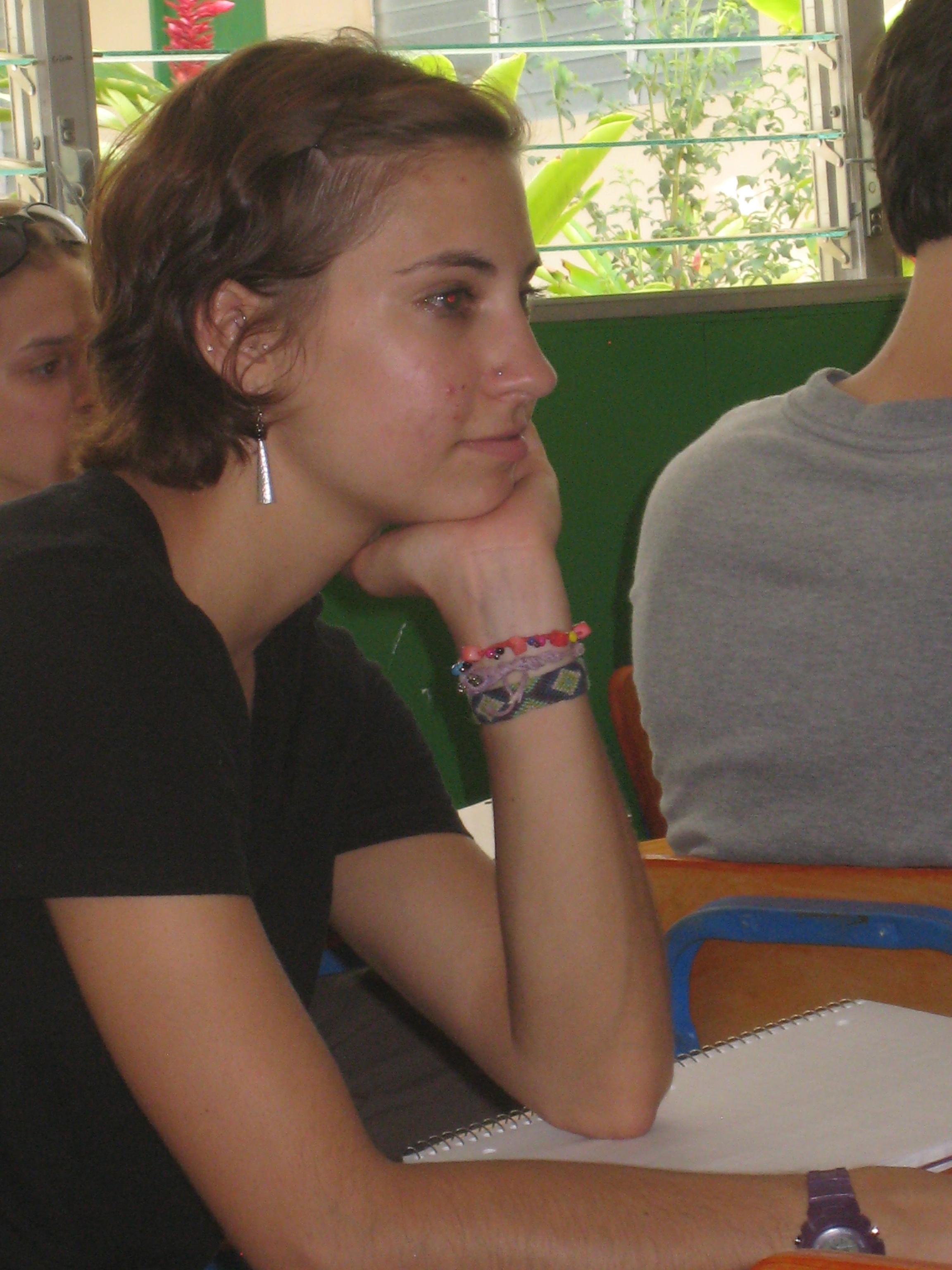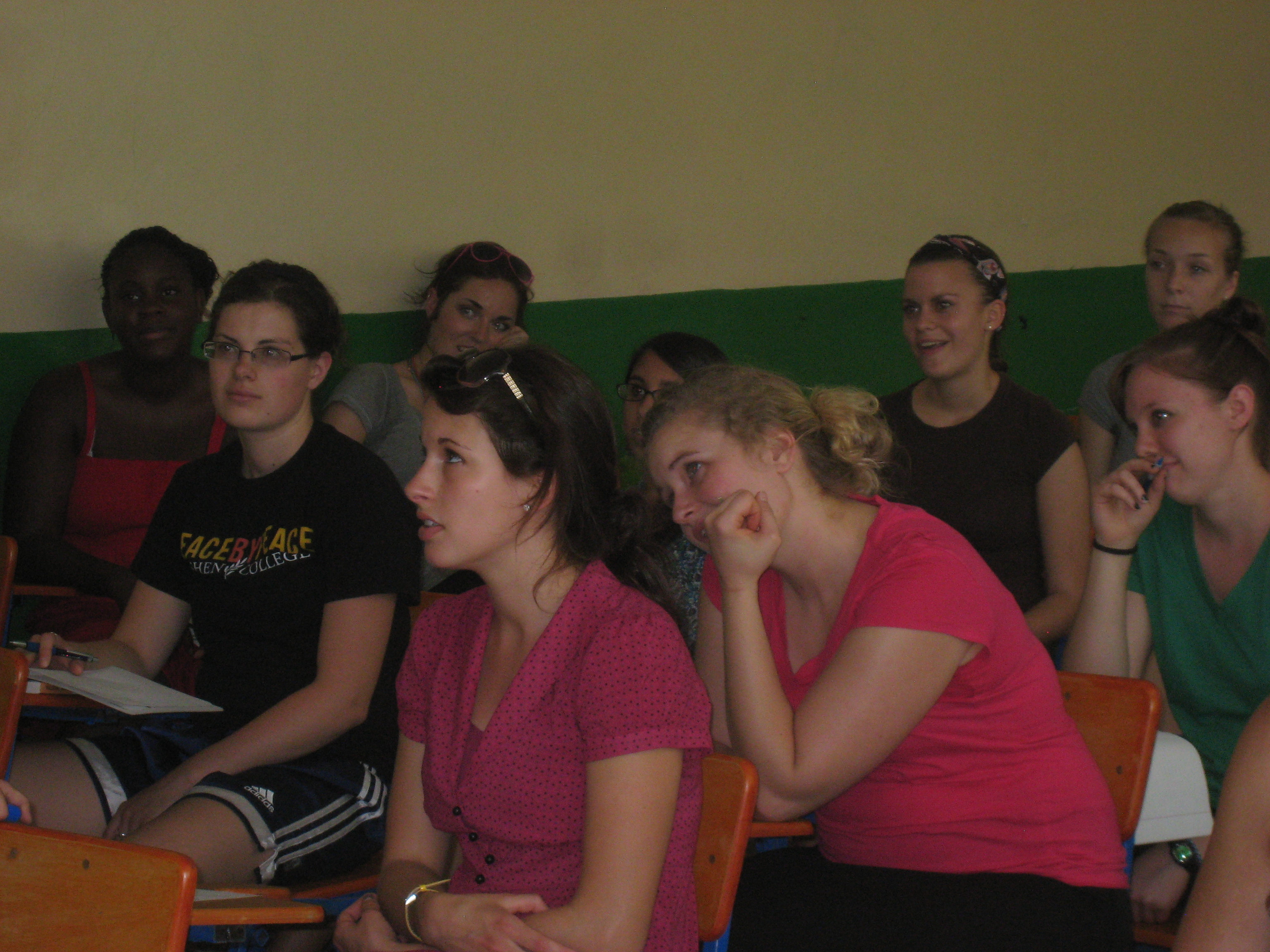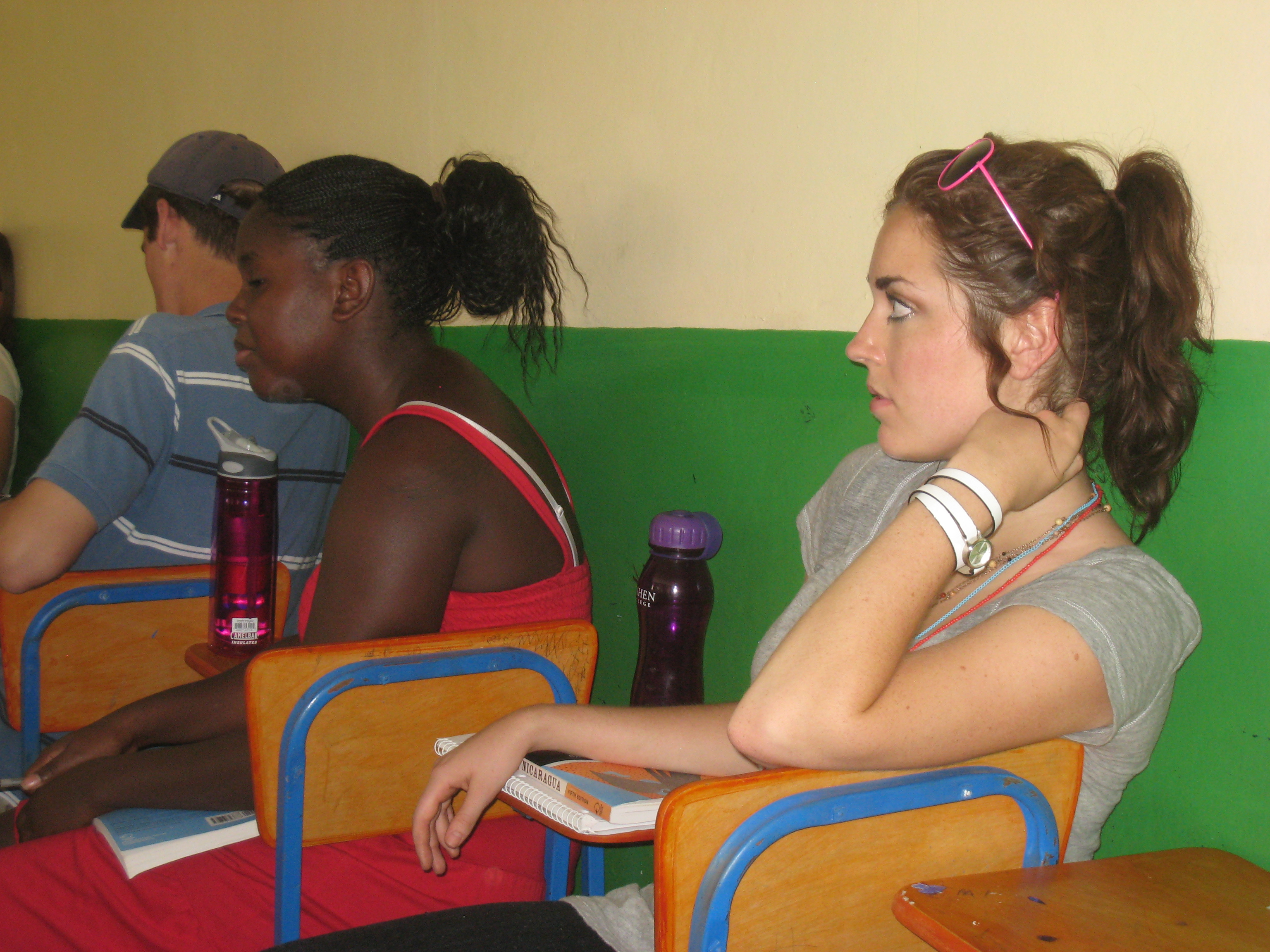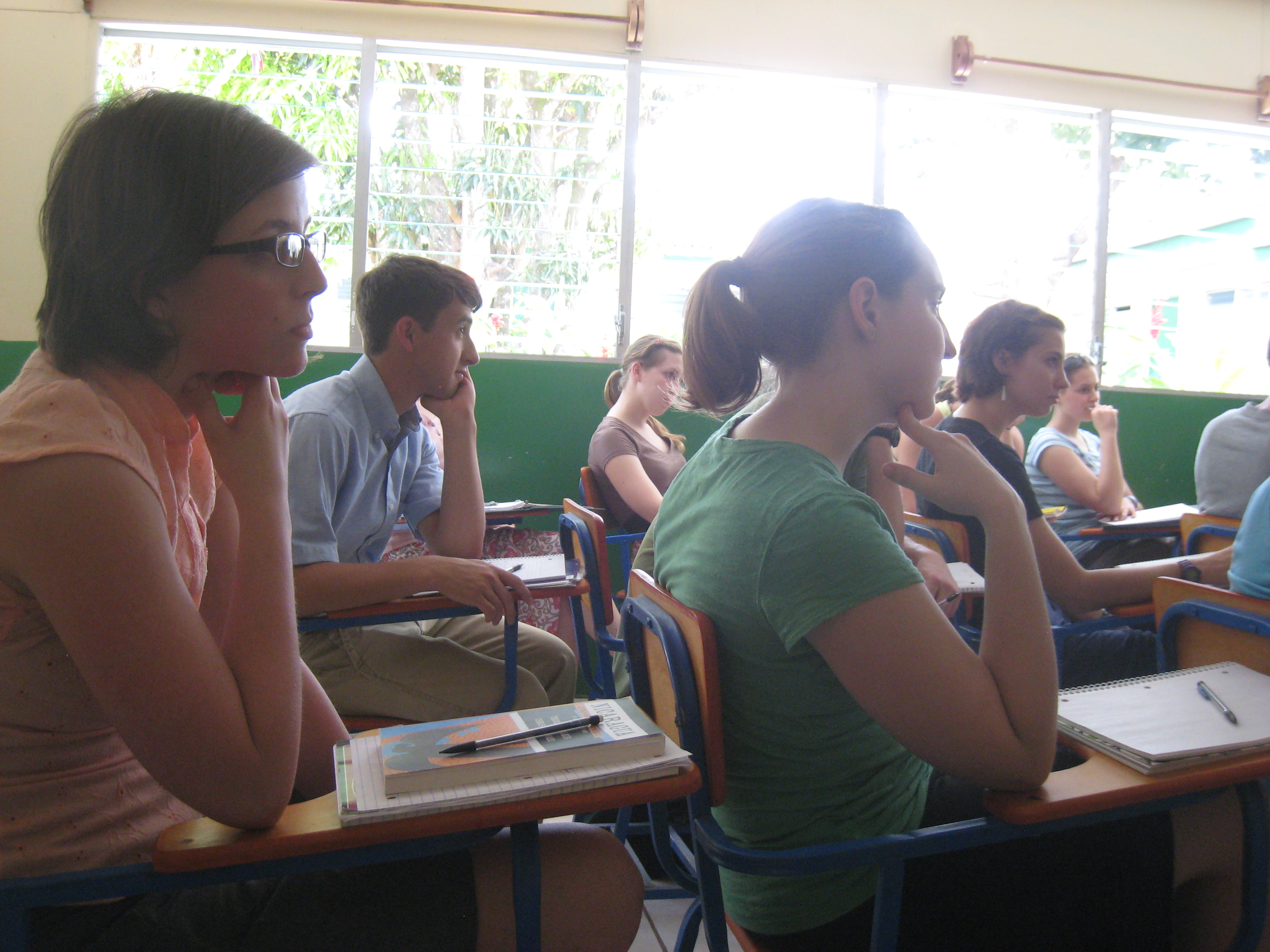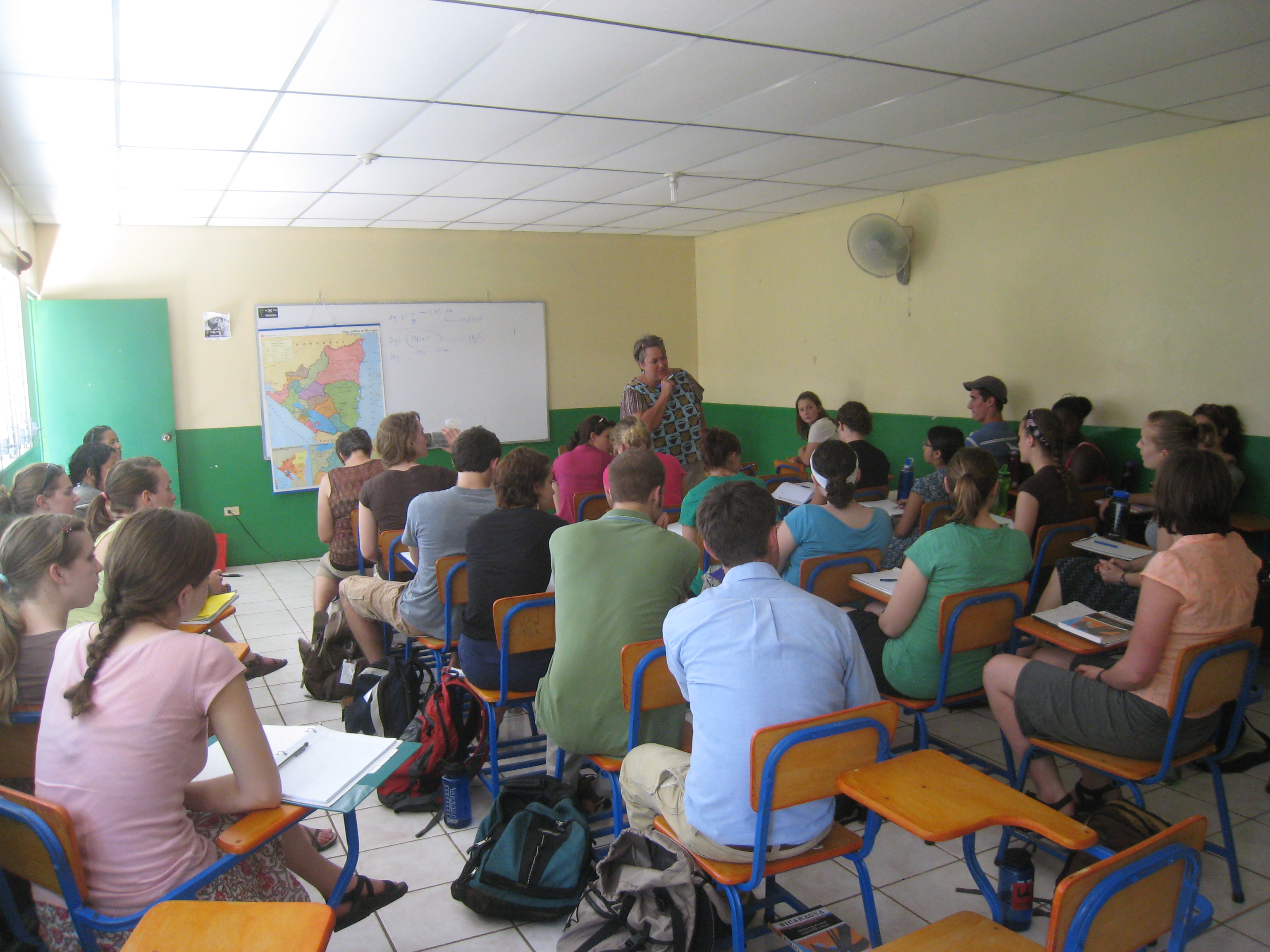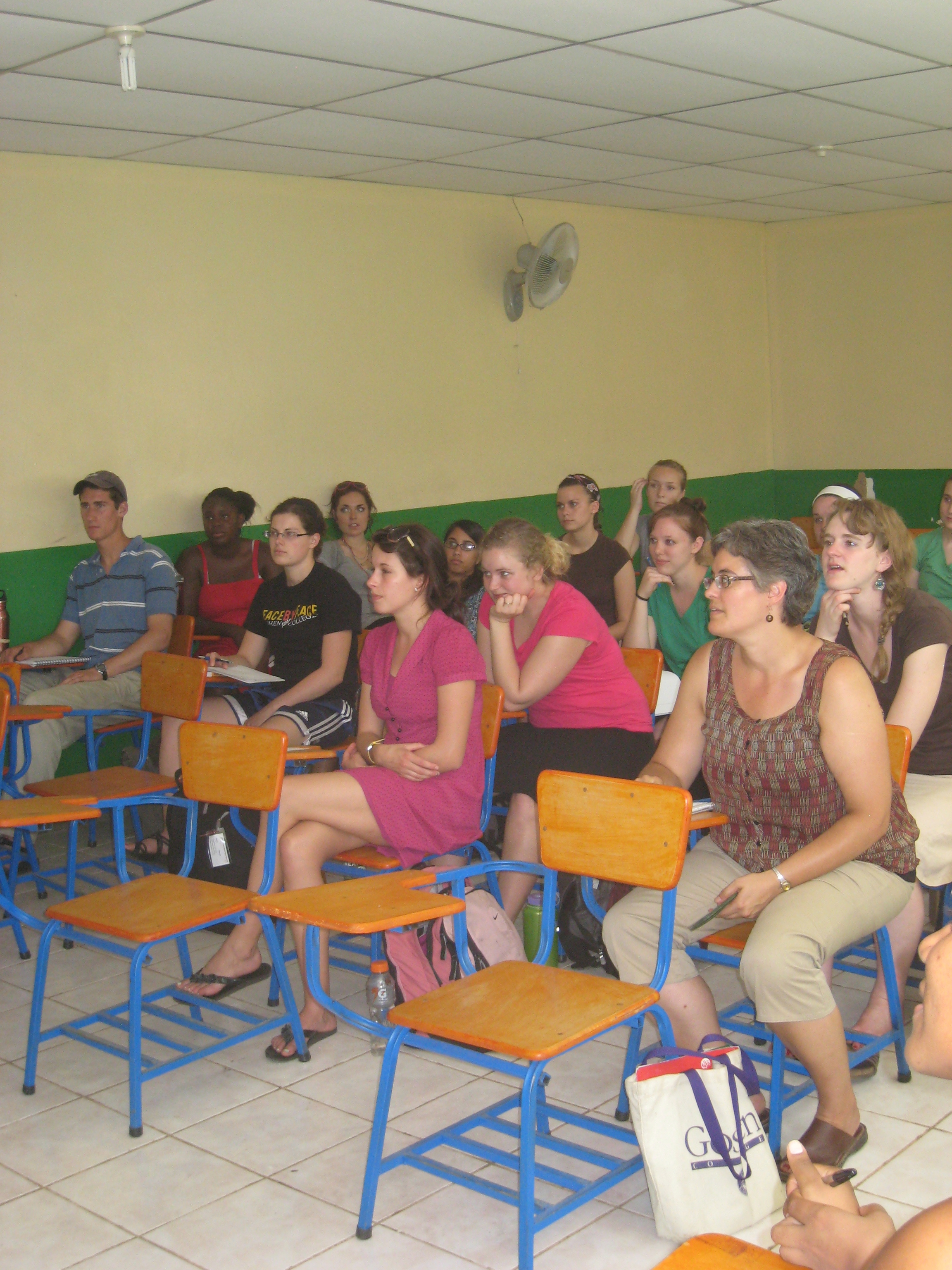Spanish classes and Nicaraguan history
Students have finally settled into a routine this past week. After a long weekend learning about their new families and how to communicate in Spanish, everyone was excited to be at Spanish class Monday morning. Most mornings, students will be in Spanish class. After class they go in smaller groups to eat lunch in various restaurants around Jinotepe. In the afternoon, we meet at a local University listening to speakers on different topics about Nicaragua. This week we had a very dynamic speaker,
Aynn Setright, a history professor who is originally from Wyoming but has been living in Nicaragua since 1985.
Aynn managed to squeeze about 500 years of Nicaraguan history into 3 days. We heard about the Spanish settling on the Pacific side, the US supported 40 year dictatorship of the Somoza family, the forming of the US opposed FSLN (Frente Sandinista de Liberación Nacional), the insurrection in July 1979 which overthrew the Somoza dictatorship, the decade where the FSLN were in power but the contras (supported by the US) were fighting against them, the first democratic election (where a US supported candidate won), the decade where the FSLN tried to win back power, and this past decade where the FSLN finally won. Daniel Ortega, the current president, was one of the strong influences of the FSLN and for the past two decades has tried to be democratically re-elected. In 2006, he finally succeeded and has been in power since.
Students were assigned to go home and speak with their family members (some FSLN supporters, some strongly opposed) and ask how they feel about the FSLN now as well as how it was in the 1980’s when they were in power. Some family members will also be able to talk about how life was during the Somoza dictatorship. Nicaragua’s history is long and complicated but Aynn brought it to life and now we can start to understand a lot more about Nicaragua.
We ended the week by reminding the students about being flexible as we switched our speaker to the morning slot and Spanish class to the afternoon. We enjoyed listening to Silvio Gutierrez speak about the literacy campaign of 1980, one of the major social campaigns that the FSLN organized once in power. Silvio shared about his involvement in the campaign and how literacy has changed since them. The illiteracy rate dropped from greater than 50% to 13% in 1980 after the campaign. Today the stated illiteracy rate in Nicaragua is 5%, but some areas continue to have illiteracy rates as high as 25% or 30%. We will have another speaker come to talk more about the education of Nicaragua next week.
Students are excited about our upcoming trip to the east coast. We leave later this week and everyone is interested in seeing the difference between the Pacific side and the East coast side. I am sure there will be lots of stories and pictures to tell from our first trip.
